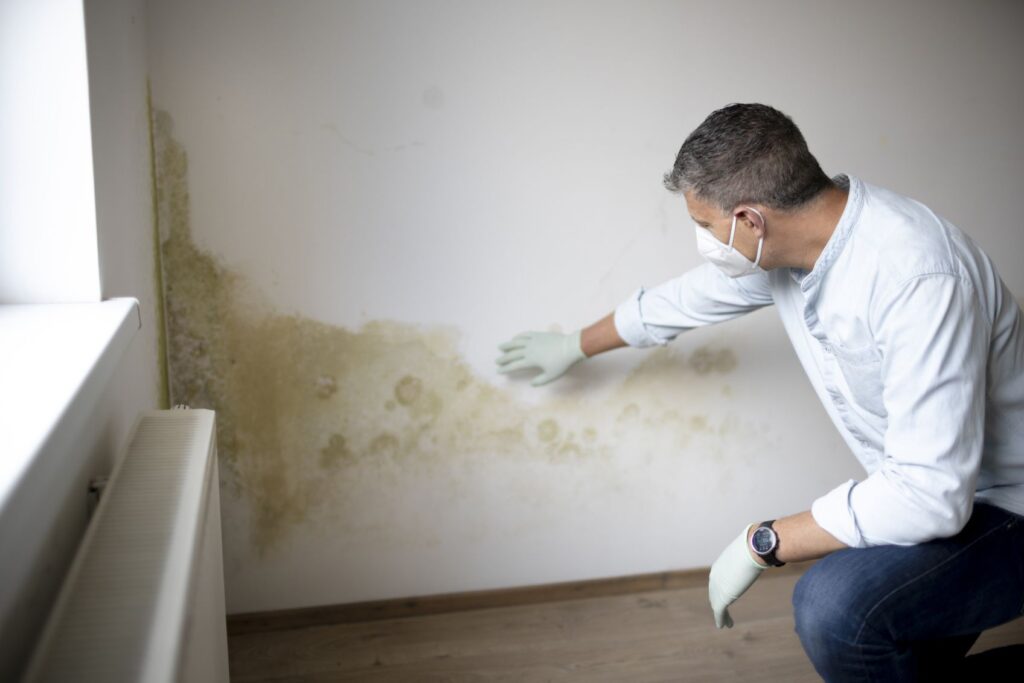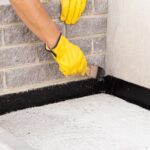
15 Sneaky Signs of Mould in Your Home
Mould can be a pesky problem in any home. It grows quickly and can cause serious health issues if left unchecked. To prevent it from taking over your home, it’s important to be aware of the signs that can indicate a potential mould problem.
If you suspect mould lurking in your home, checking for the most common signs is an excellent place to start. This includes visible water stains or discoloration on walls and ceilings, musty odours, peeling paint, and swollen floors or ceilings. However, mould can also be hiding in less obvious places such as air vents, crawl spaces under the house, and damp fabrics such as carpets or upholstery.
The rest of the article will discuss how to identify and investigate sneaky signs of hidden mould in your home.
Signs of Mould in Your Home
Mould is a type of fungus that needs moisture to grow and can be found in any area of a home where dampness is present, such as basements, attics, or bathrooms. Mould spores are released into the air, which can cause health problems for people allergic to them.
It is important to be on the lookout for any signs of mould growth in order to keep your home free of this potentially hazardous fungus. Common signs of mould include:
1. Musty Smell in Your Home
One of the most obvious signs of mould growth is an unusual musty or stale smell. This odour is caused by MVOCs, which are chemicals released by moulds during their life cycle. The smell can be described as musty, stale, or earthy, and it is often strongest in areas with high moisture levels.
If you detect this smell in your home, it’s important to investigate right away to find the source of the problem and take action to prevent additional mould growth.
2. Weird-Smelling A/C Filters
If your air conditioner or heating system filter smells strange, this could mean that mould has taken up residence in the machine. The filters of HVAC systems are designed to trap allergens like pollen, dust, and pet dander. However, they can also be a breeding ground for mould if moisture is present.
3. Warped Walls and Floors
Warped walls and floors can be a sign of excess moisture in your home, which is a breeding ground for mould. If your walls or floors are warping in certain areas, it could indicate a mould problem.
You should investigate further and check for visible signs of mould growth, and take steps to address the underlying moisture issue.
4. Dark Stains on Walls or Ceilings
Mould and mildew can leave dark or black stains on walls, ceilings, and other surfaces. Mould eats wood, paper, and other organic materials with ease. It’s not uncommon to find deep brown or black spots on walls in moist areas of your home.
If you notice any discolorations or staining on walls or ceilings, you should check the area for any mould growth.
5. Peeling or Bubbling Paint and Wallpaper
Notice any bubbling, cracking, or peeling paint (or wallpaper)? It could be the result of excess moisture and condensation build-up, typically due to poor ventilation. There might be mould lurking behind your damaged paint.
6. Water Heater Leaks
Leaks from water heaters can provide the perfect environment for mould to thrive. Check your water heater regularly for any signs of drips, discoloration, or a mildew-like smell. If you suspect your water heater is leaking, it’s important to immediately take action to prevent mould growth.
7. Contaminated Carpets
Mould can cause carpets to discolour, develop stains, and feel noticeably damp. Suppose you notice spots, stains, or odours on your carpet that seem out of the ordinary. Examining both sides of the rug and padding is important in that case.
Left untreated, carpets and rugs can be a breeding ground for harmful mould. To avoid this problem, it is important to inspect both the carpet and padding regularly.
8. Unusual Spots on Furniture
Mould can often grow in furniture, particularly if it is made of wood or fabric. The furniture may look discoloured or develop spots and stains. Notice any unusual marks on your furniture? It could be a sign that mould is present and should be addressed immediately.
9. Tarnished Tiles
The grout between your bathroom tiles is a breeding ground for mould and mildew if it’s not cleaned regularly. Mould can sometimes grow underneath tiles and grout, making them discoloured. If you notice gunk build-up, it’s time to give the area a good scrub.
To avoid this problem, you should wipe the tub and walls dry with a squeegee after every shower or bath. Additionally, don’t put any wet towels or clothes in the hamper. If you see any discoloration on the shower curtain, clean it right away.
10. Musty Odors in Clothes and Linens
Mould can grow in clothes and linens, particularly if not washed regularly. If your clothes and linens have a musty smell, mould spores have likely taken hold of the fabric.
To avoid this problem, wash all fabrics in hot water with detergent every 2-3 weeks and dry them thoroughly.
It is also important to put your clothes in the sun to kill mould spores. Exposure to direct sunlight will help eliminate mould spores that may be causing problems in your home.
11. Persistent Cold or Cough
If you have a persistent cough or cold that won’t go away, it could be caused by mould spores in your home. These tiny particles can get into the air and be inhaled, leading to chronic respiratory issues.
If you feel like something is up with your breathing, but you don’t know what it could be, it is important to inspect your home for mould.
12. You Feel Itchy
It could be a sign of mould if you suddenly start feeling itchy, especially in certain parts of your home. Mould spores can cause skin irritation and even rashes if they come in contact with your skin. So if you’re feeling itchy while at home, there’s a good chance that mould may be the culprit.
Inspect your home for mould if you’re feeling itchy or experiencing other suspicious symptoms. You may just find something lurking in your home’s dark corners that could make you sick!
13. Allergies, Asthma, and Respiratory Symptoms
Symptoms such as sneezing, wheezing, and watery eyes can all be caused by exposure to mould spores.
Allergy tests can help identify the cause of your symptoms. Suppose you test positive for allergies to common indoor moulds. In that case, it is important to take swift action to eliminate any sources of mould in your home.
14. Chronic Fatigue and Headaches
Living in a mouldy home can often lead to chronic fatigue and headaches. Chronic fatigue is a condition in which one experiences extreme tiredness that doesn’t go away after resting or sleeping. If you’re feeling unusually tired or having frequent headaches, it could be a sign of mould in your home.
15. Unusual Pet Behavior
Pets can be sensitive to mould and may display signs of discomfort if exposed to it. These signs can range from sneezing and coughing to having watery eyes and runny noses. Pets may also become lethargic or generally seem unwell if mould is present in the home.
Don’t Settle for Less Than a Thorough Home Inspection
If you are worried about mould in your home, Contact Pillar Restoration for help. We have certified professionals who will identify any potential problems and take steps to remove mould if present. Our proven process has successfully helped many people get rid of mould in their homes.
Need a Restoration Contractor?




